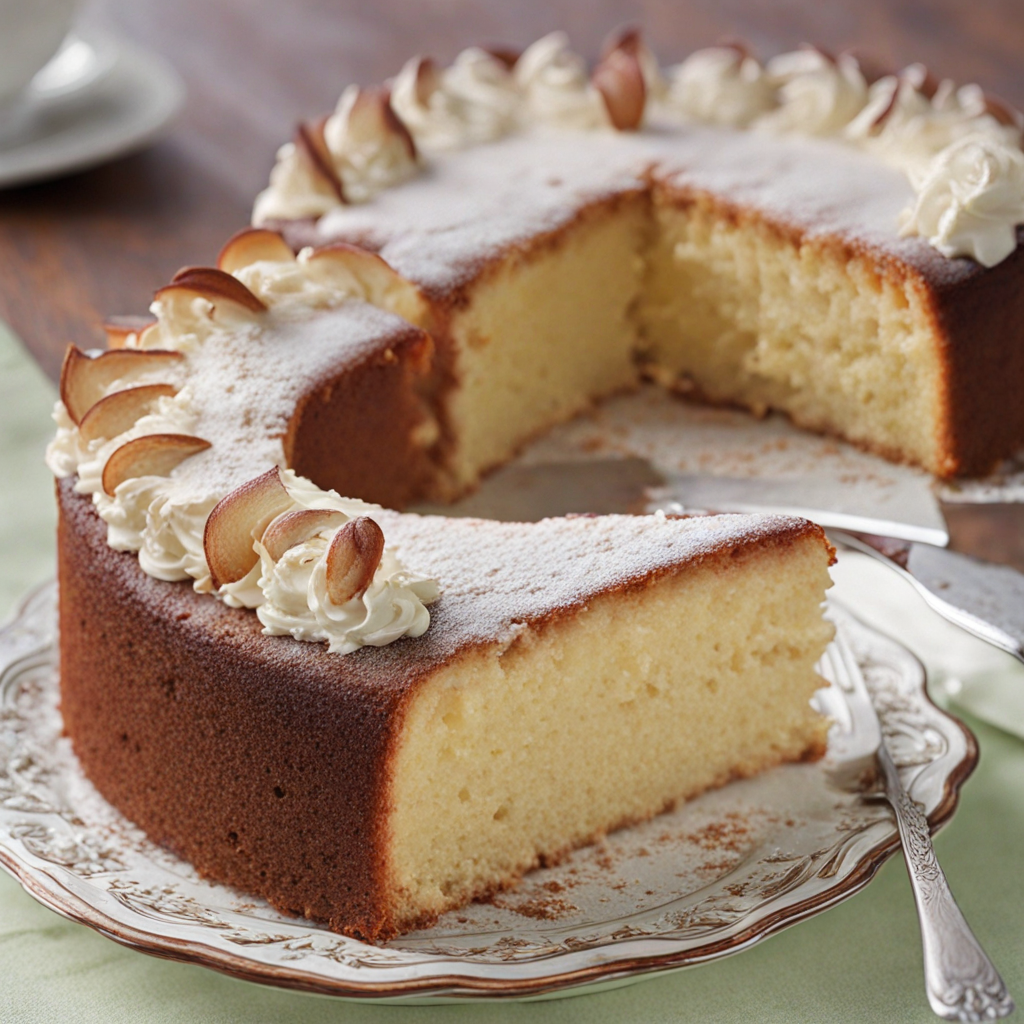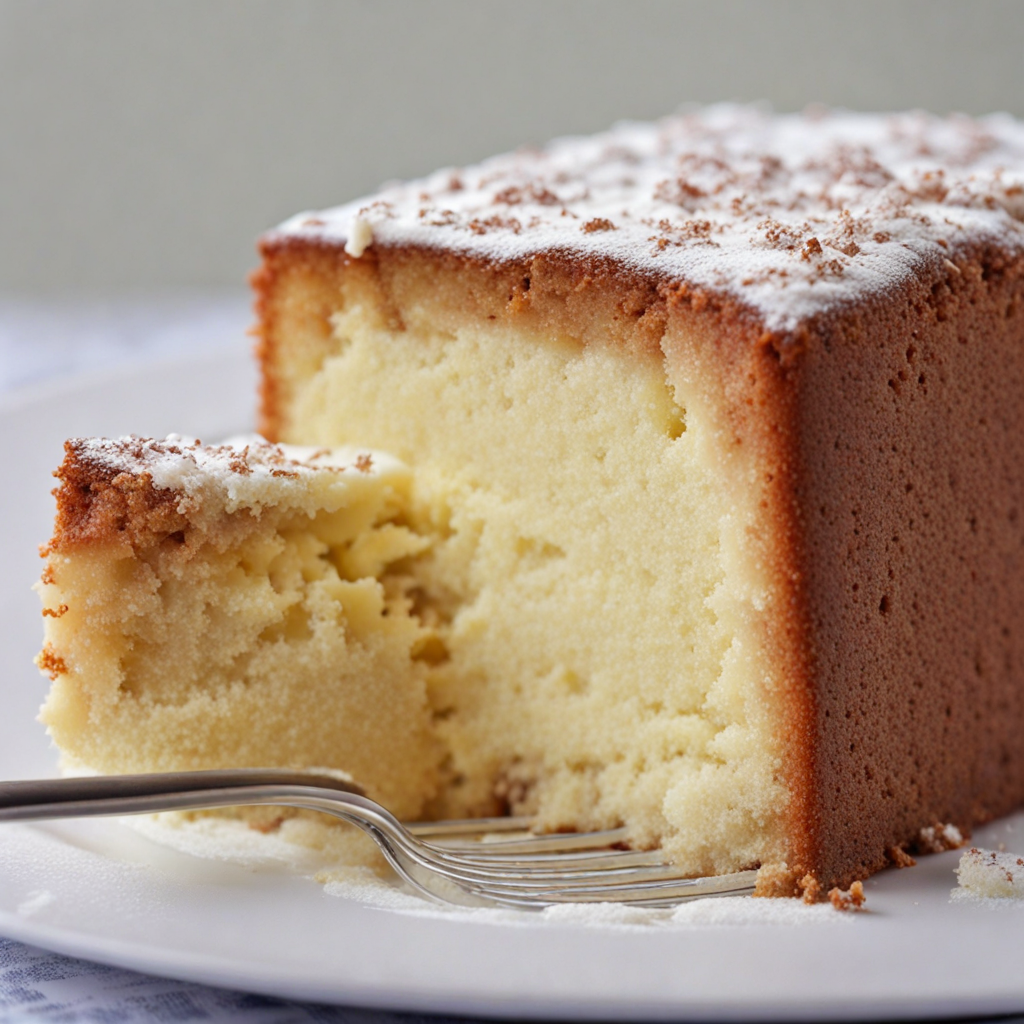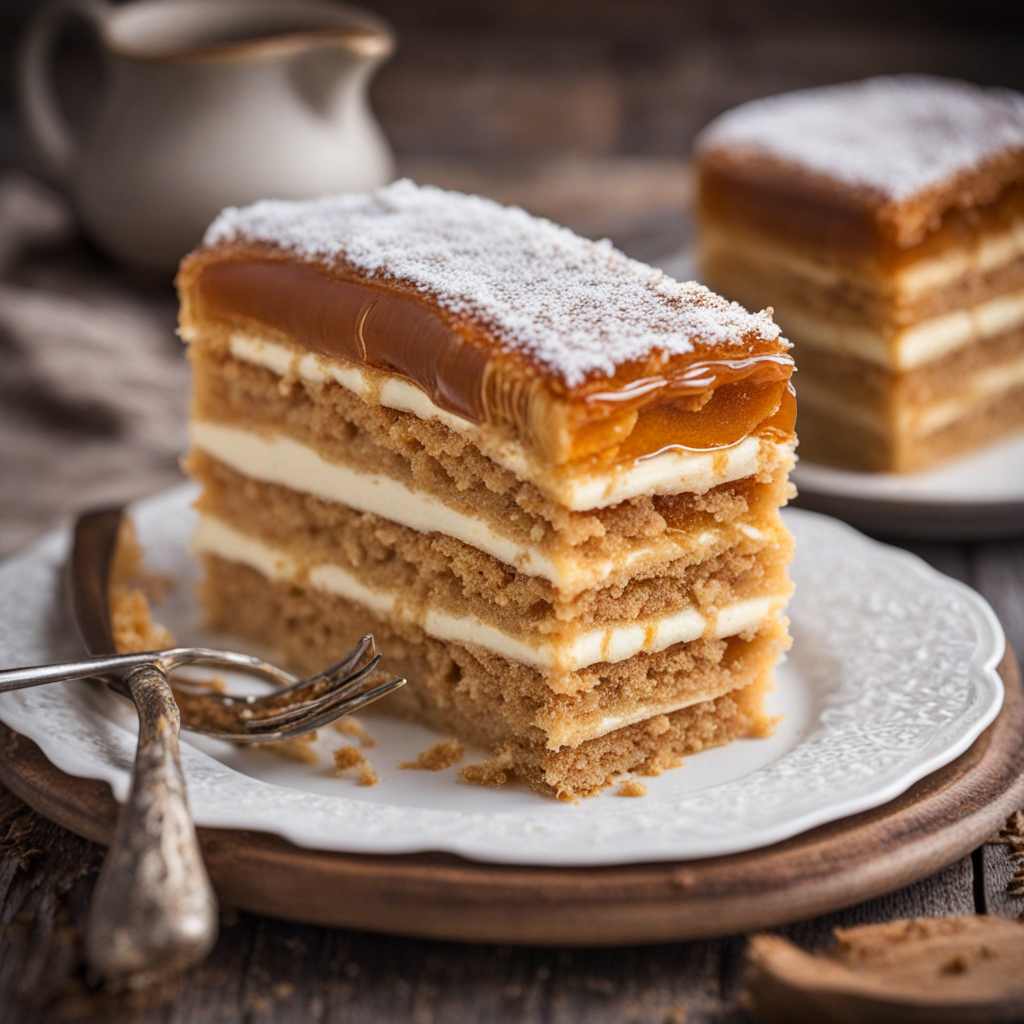Sour Cream Cake
Sour Cream Cake, or "Sour Cream Cake" as it is often referred to in Estonia, is a delightful dessert that embodies the simplicity and richness of Estonian cuisine. This cake features a moist and tender crumb, thanks to the generous use of sour cream, which not only adds a creamy texture but also infuses the cake with a subtle tanginess. The base is typically made from a blend of flour, sugar, eggs, and baking powder, creating a light yet satisfying structure that perfectly complements the creamy elements. One of the hallmark characteristics of Sour Cream Cake is its versatility. It can be enjoyed plain or adorned with various toppings such as fresh berries, fruit preserves, or a dusting of powdered sugar. The sweet and tart flavor of the cake pairs beautifully with a variety of accompaniments, making it a popular choice for celebrations and gatherings. This cake also holds a special place in Estonian culture, often served during festive occasions and family gatherings, showcasing the warmth of Estonian hospitality. The cake's flavor profile is a harmonious balance of sweetness and acidity, making each bite a delightful experience. The sour cream not only moistens the cake but also elevates its flavor, creating a complex yet approachable taste. Whether enjoyed with a cup of coffee or as a standalone dessert, Sour Cream Cake offers a unique glimpse into Estonian culinary traditions, inviting those who try it to savor the comforting and homely essence of this beloved treat.
How It Became This Dish
The Engaging History of Hapukoorekook: Estonia's Delightful Sour Cream Cake Hapukoorekook, a beloved traditional cake from Estonia, embodies the rich tapestry of the country's culinary heritage. This sweet treat, primarily made with sour cream, has roots deeply embedded in Estonian culture and reflects the broader historical and environmental influences that have shaped the region’s cuisine over centuries. #### Origins: A Reflection of Ingredients and Traditions The origins of Hapukoorekook can be traced back to the peasant traditions of Estonia. Dating as far back as the 19th century, the use of sour cream in baking was a common practice among Estonian farmers, who sought to utilize local dairy products in their daily cooking. Sour cream, or "hapukoor," was a staple in Estonian households, not only due to its flavor but also because of its long shelf life and nutritional value. In those earlier days, the cake was often made for special occasions, such as family gatherings, holidays, and communal feasts. The simplicity of the cake's ingredients—flour, sugar, eggs, and sour cream—allowed it to be easily prepared by the home cook. The cake's moist texture and tangy flavor made it a favorite among both children and adults, providing a comforting taste of home that resonated with the local populace. #### Cultural Significance: A Symbol of Hospitality and Celebration Hapukoorekook is more than just a dessert; it is a symbol of Estonian hospitality and communal spirit. In a culture where food plays a pivotal role in social interactions, serving this cake to guests is a gesture of welcome and warmth. The tradition of baking and sharing Hapukoorekook during celebrations reflects the importance of community and togetherness in Estonian life. The cake is often associated with significant milestones, including birthdays, weddings, and the Midsummer festival, known as Jaanipäev. During these events, Hapukoorekook is featured prominently on tables alongside other traditional Estonian dishes. It provides a sense of continuity and connection to the past, allowing families to pass down recipes and stories through generations. In addition to its role in celebrations, Hapukoorekook has also been a part of daily life. Its versatility allows it to be enjoyed as a dessert, a snack, or even for breakfast. The cake can be enhanced with various toppings, such as fresh berries, nuts, or a drizzle of honey, making it adaptable to different occasions and personal tastes. #### Development Over Time: From Tradition to Modernity As Estonia underwent significant changes throughout the 20th century, particularly during the Soviet occupation and subsequent independence in the 1990s, the culinary landscape transformed as well. While traditional recipes remained cherished, there was an influx of new ideas and ingredients, leading to a fusion of old and new culinary practices. In recent years, the popularity of Hapukoorekook has experienced a revival, particularly among younger generations who are keen to connect with their cultural heritage. Contemporary Estonian chefs and home bakers alike have begun experimenting with the traditional recipe, incorporating modern techniques and flavors. Variations have emerged, such as chocolate or fruit-infused versions, expanding the cake's appeal beyond its traditional confines. Moreover, the rise of food tourism in Estonia has brought greater attention to traditional dishes, including Hapukoorekook. Visitors to the country are increasingly seeking out authentic culinary experiences, leading to renewed interest in local foods. Restaurants and cafés have begun to feature the cake prominently on their menus, often presenting it alongside other Estonian delicacies. This resurgence has not only helped to preserve the cake's legacy but also to introduce it to a global audience. #### The Modern Era and Global Influence Today, Hapukoorekook stands as a proud representation of Estonian identity and resilience. The cake's journey from humble beginnings to a celebrated national dessert reflects the broader narrative of Estonia itself—a country that has embraced its roots while simultaneously adapting to changing times. Social media has played a significant role in this evolution, with platforms like Instagram and TikTok showcasing beautiful images and recipes for Hapukoorekook. The visual appeal of the cake, often adorned with fresh fruits and artistic decorations, has captivated a wider audience, both domestically and internationally. Food bloggers and enthusiasts have taken to sharing their interpretations of the cake, sparking conversations about traditional recipes and encouraging adaptation. The concept of food as a form of cultural expression has gained traction, and Hapukoorekook serves as a delicious reminder of the importance of culinary heritage. Whether enjoyed in a quaint café in Tallinn or prepared at home for a family gathering, the cake continues to represent the warmth, creativity, and resilience of the Estonian people. #### Conclusion: A Slice of Estonia's Heritage As we reflect on the history of Hapukoorekook, it becomes clear that this delightful sour cream cake is more than just a recipe passed down through generations. It is a symbol of Estonian culture, embodying the values of hospitality, community, and resilience. The cake has evolved over time, adapting to modern tastes while remaining firmly rooted in its traditional origins. Whether enjoyed during a festive celebration or savored as a daily treat, Hapukoorekook holds a special place in the hearts of those who cherish Estonian cuisine. As the world becomes increasingly interconnected, this iconic cake has the potential to bridge cultural divides, inviting people to experience the rich flavors and traditions of Estonia. With each bite, one can taste the history, heritage, and love that has gone into this cherished dessert, ensuring that Hapukoorekook remains a vibrant part of Estonian culinary life for years to come.
You may like
Discover local flavors from Estonia







